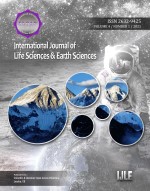Lessons learned from the business model of sustainable vicuna fiber production management in Chile
Keywords:
Aymara, business model, lesson learned, sustainable management, vicuñaAbstract
The purpose of this article is to share with stakeholders and researchers in the Aymara livestock sector the results, experiences and lessons learned about the production and commercialization of vicuña fiber under sustainable management from different innovation initiatives financed by the Foundation for Agrarian Innovation, FIA. It is hoped that this information, systematized in the form of a "learned business model", will provide stakeholders with the information they need and provide elements that will allow them to make productive decisions and, potentially, develop initiatives related to this economic sector.
Downloads
References
Arzamendia, Y., Bonacic, C., & Vilá, B. (2010). Behavioural and physiological consequences of capture for shearing of vicuñas in Argentina. Applied Animal Behaviour Science, 125(3-4), 163-170. https://doi.org/10.1016/j.applanim.2010.04.013
Badaracco, A., Matthijnssens, J., Romero, S., Heylen, E., Zeller, M., Garaicoechea, L., ... & Parreño, V. (2013). Discovery and molecular characterization of a group A rotavirus strain detected in an Argentinean vicuña (Vicugna vicugna). Veterinary microbiology, 161(3-4), 247-254. https://doi.org/10.1016/j.vetmic.2012.07.035
Barra R., 2009. Final Report Project FIA-PI-T-2006-IP-104, “Production and Export of Fibers of South American Camels Under Sustainable Associative Model with Aymara Communities of the Altiplano of the Tarapacá Region”. Execution Region: XV Region of Arica and Parinacota.
Bonacic C., 2008. Ecology of the Vicuña and its management. Ecology. Info 27.
Bonacic, C., 1998. Population dynamics of the vicuña (Vicugna vicugna) and determination of capacity cargo in the province of Parinacota, Chile. In: González, B., Bas, F., Tala, C. and Iriarte, A. (eds.). Sustainable management of the vicuña and the guanaco. Proceedings of the International Seminar, Santiago, Chile. November 18 and 19, 1998. Agricultural and Livestock Service, Pontificia Universidad Católica de Chile and Foundation for Agrarian Innovation.
Bonacic, C., 1998. Sustainable management of the vicuña: it is possible to reconcile the exploitation of the species and animal welfare. In: González, B., Bas, F., Tala, C. and Iriarte, A. (eds.). Sustainable management of the vicuña and the guanaco. Proceedings of the International Seminar, Santiago, Chile. November 18 and 19 1998. Agricultural and Livestock Service, Pontifical Catholic University of Chile and Foundation for Agrarian Innovation.
Brack, A., 2003. South American camelids. 2003. [Consultation: December 2008]. Bonacic, C. and J. Galaz, 1997, I Project Report: Pilot plan for the use of vicuña fiber (Vicugna vicugna) in the highlands of the province of Parinacota. GEF-CHI / 97 / G05, Norte Grande Studies and Development Corporation.
BTA. 2008. Market study of fine fibers from South American camelids. Agricultural Biotechnology SA (BTA). FIA Report, November 2008.
Bustinza, V. 1981. Some characteristics of the fiber and live weight of vicuña in Kala-Kala. Magazine of the National University of the Altiplano. Puno, Peru.
Calle, W. and Galaz, JL, 2005. Handling, handling and shearing of vicuñas. Characteristics and handling of the fiber. In Galaz, J. and González, G. (eds.). Productive management techniques of vicuña (Vicugna Vicugna Molina, 1782) in Chile. National Forestry Corporation - Foundation for Agrarian Innovation (CONAF - FIA). 280 pp.
Dubeuf, J. P., Morand-Fehr, P., & Rubino, R. (2004). Situation, changes and future of goat industry around the world. Small Ruminant Research, 51(2), 165-173. https://doi.org/10.1016/j.smallrumres.2003.08.007
FIA, (2009). Results and Lessons in Production and Marketing of Vicuña Fiber Innovation Projects in the Arica y Parinacota Region and the Tarapacá Region. ISBN No. 978-956-328-013-5
Klein, J. A., Tucker, C. M., Steger, C. E., Nolin, A., Reid, R., Hopping, K. A., ... & Yager, K. (2019). An integrated community and ecosystem-based approach to disaster risk reduction in mountain systems. Environmental science & policy, 94, 143-152. https://doi.org/10.1016/j.envsci.2018.12.034
McAllister, R. R., McNeill, D., & Gordon, I. J. (2009). Legalizing markets and the consequences for poaching of wildlife species: The vicuña as a case study. Journal of environmental management, 90(1), 120-130. https://doi.org/10.1016/j.jenvman.2007.08.014
Quispe, E. C., Ramos, H., Mayhua, P., & Alfonso, L. (2010). Fibre characteristics of vicuña (Vicugna vicugna mensalis). Small Ruminant Research, 93(1), 64-66. https://doi.org/10.1016/j.smallrumres.2010.03.019
Published
How to Cite
Issue
Section
Copyright (c) 2021 International journal of life sciences & earth sciences

This work is licensed under a Creative Commons Attribution-NonCommercial-NoDerivatives 4.0 International License.
Articles published in the International Journal of Life sciences & Earth sciences (IJLE) are available under Creative Commons Attribution Non-Commercial No Derivatives Licence (CC BY-NC-ND 4.0). Authors retain copyright in their work and grant IJLE right of first publication under CC BY-NC-ND 4.0. Users have the right to read, download, copy, distribute, print, search, or link to the full texts of articles in this journal, and to use them for any other lawful purpose.
Articles published in IJLE can be copied, communicated and shared in their published form for non-commercial purposes provided full attribution is given to the author and the journal. Authors are able to enter into separate, additional contractual arrangements for the non-exclusive distribution of the journal's published version of the work (e.g., post it to an institutional repository or publish it in a book), with an acknowledgment of its initial publication in this journal.















